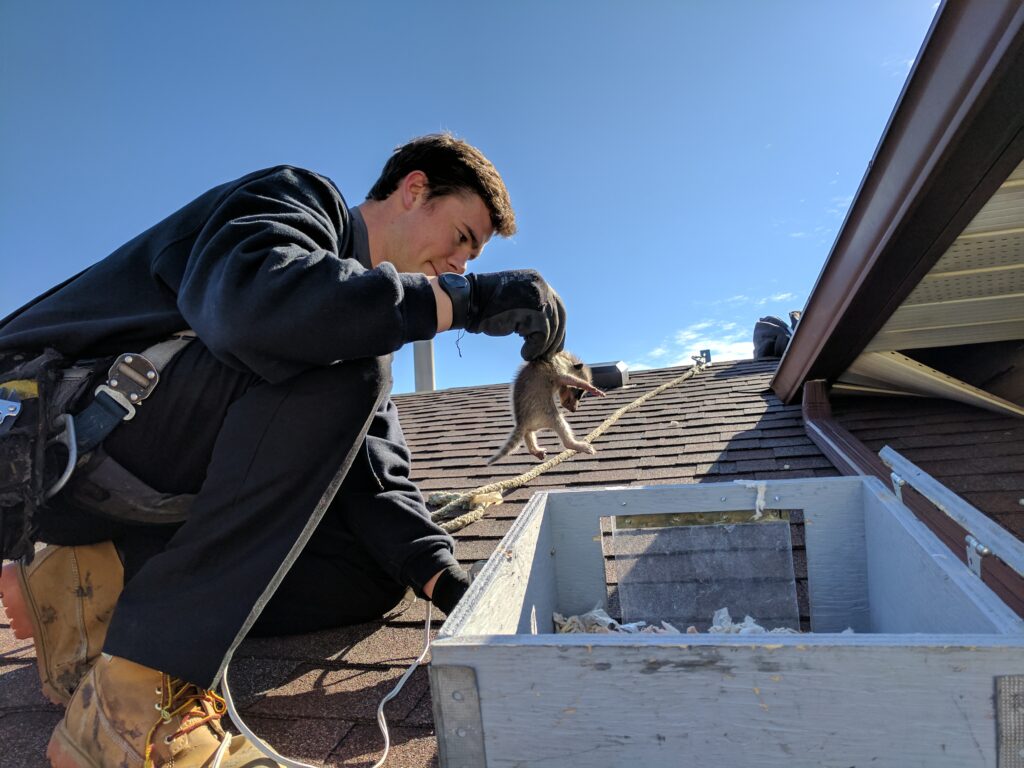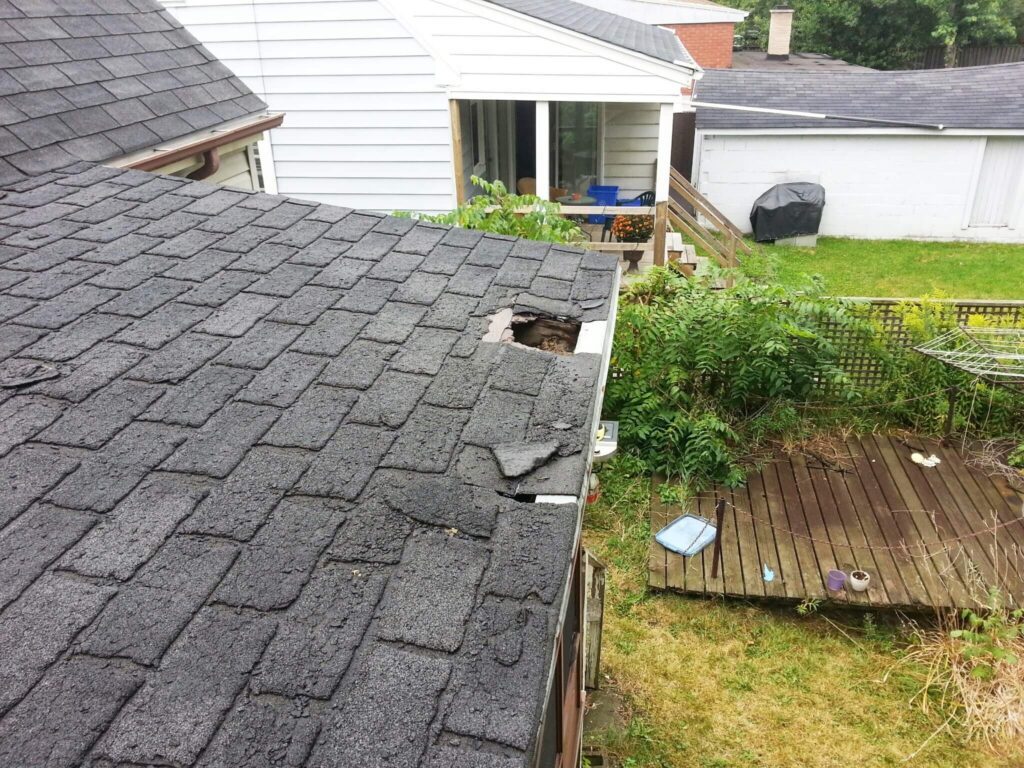Wildlife control is something countless homeowners throughout Canada have to face all year round. When dealing with an infestation, your first instinct will likely be to get the critters out before they cause damage and put your health at risk. There are some strategies that people try themselves and one that is never recommended is the use of poison. Leaving poison out is not only extremely cruel, but can also be dangerous for your pets, young children and other outdoor animals.

Trapping wildlife separates mothers from their babies which isn’t a humane approach. Here a Skedaddle technician places a baby raccoon in a heated reunion box for its mother to collect and relocate to one of her alternate dens.
Another method commonly used by homeowners use is live trap-and-release. Trapping can seem simple enough however it does come with its own set of concerns.
1. Wildlife Control Must Be Done In A Humane Way
If you choose to remove wildlife yourself you could face animal cruelty charges if you use a trap improperly and injure wildlife in the process. Most jurisdictions have rules and regulations that govern the use of live-traps for humane wildlife services. It is important to do your research and be aware of these laws and abide by them or risk facing animal cruelty charges.
2. Capturing Non-Target Animals
When setting a trap there’s no guarantee that you’ll capture the animal you’re after. The bait you place inside the trap could attract other animals that have nothing to do with the wildlife issue you’re experiencing. Many homeowners attempting to trap raccoons on their property end up with skunk in their trap and risk getting sprayed trying to release the animal.
3. Trapped Wildlife Spreads Disease
Wild animals can be carriers of dangerous diseases, rabies chief among them. When homeowners trap and relocate wildlife they risk spreading diseases to locations where the disease didn’t exist before. Raccoons and skunks are both common carriers of rabies and are capable of transmitting the fatal disease to people and pets.
4.Relocating Wildlife Is Not Humane
Many homeowners are under the impression that wildlife trapped in cities are better off in the country. Nothing could be further from the truth as studies show that most relocated animals don’t survive in their new environment because they’re unfamiliar with where to find food and shelter. You could also relocate a mother which could lead to the deaths of her orphaned babies. Hardly a humane solution.
5. Humane Wildlife Control Also Dictates Releasing Trapped Animals Within 24 Hours
Captured animals should be released within 24 hours. This is because animals are vulnerable when in traps. Live trapping puts the animal through tons of stress and if left in them for a long time, they could die from dehydration and starvation. Similarly, they could also be seriously injured or die from trying to escape, frostbite or heat stroke or even other wildlife.

Trapping wildlife is no substitute for proper home maintenance. You’ll only end up with more wildlife issues in the future.
These are just some of the rules and tips you need to follow if you are looking at the live trapping method. Taking wildlife control matters into your own hands is not only a bad idea but it can be dangerous to you. Wildlife are unpredictable and could cause serious injury to you. It is best to call a professional animal removal expert like those at Skedaddle Humane Wildlife Control. Their fully trained technicians use only the most humane methods in ridding you of the infestation while fixing the problem once and for all.
There is just no substitute for experience and Skedaddle has a nearly 30 year track record of success. Save yourself the extra work and hassle and leave these jobs to the experts who will remove the animal safely and properly.


